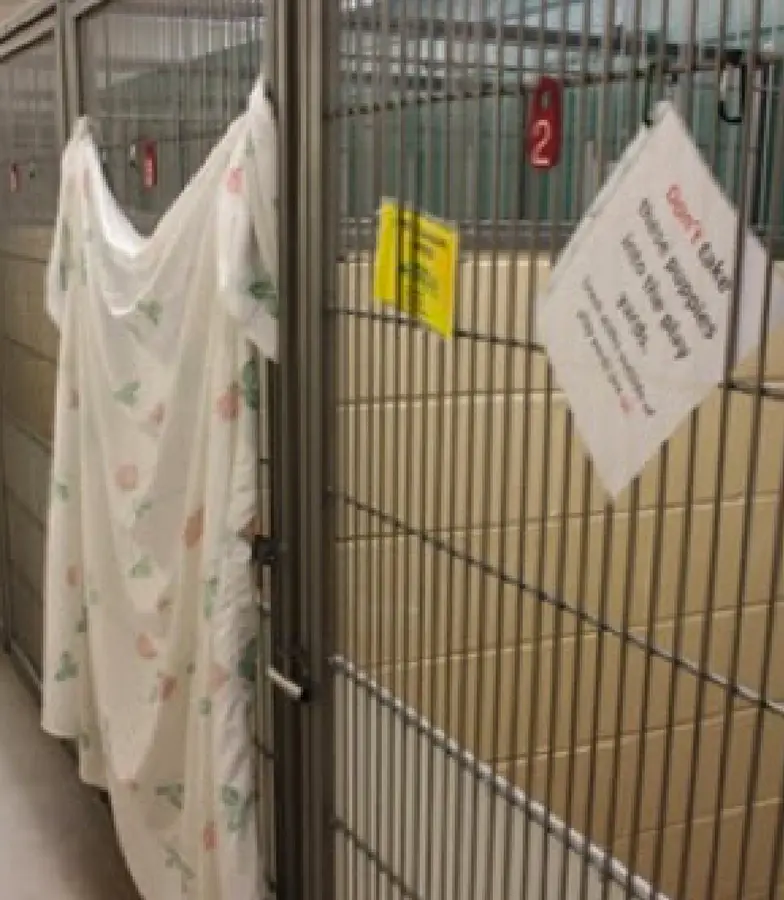Three Tips for Reducing Barking in the Shelter

Less barking means lower stress
Loud, prolonged barking is stressful to you and to the animals in your shelter. Here are three tips from Dr. Patricia McConnell that can be shared with kennel staff and volunteers to reduce barking.
Make the Kennel a Happy Place
Of course time outside the kennel is good for a dog’s physical and mental well-being. However, brief periods outside may actually arouse dogs, making them more likely to bark—and the reality is they will spend the majority of their time in their kennel. Try these in-kennel soothers:
- Use bedding and toys to keep dogs comfortable and mentally stimulated
- Have volunteers and staff go into the kennels and spend time with the dogs there. McConnell asks, “What better way for a dog to feel comfortable and ‘at home’ than having a person settle in with them for a while, just as you would in your living room?”
- Train for “quiet” by having staff carry treats, or attach containers with treats on each kennel and reward dogs for being quiet as you pass

Decrease Visual Stimulation
To decrease visual overstimulation, especially for very reactive dogs, install inexpensive barriers on the “working” side of the kennels where dogs are taken in and out. Pictured here is an inexpensive fix for a visually stimulated barker, courtesy of Dane County Humane Society in Madison, WI.
Some shelters install “Dutch doors” where the bottom half of the kennel door is covered so dogs can't see other dogs as they walk by.
Control Acoustic Stimulation
Soothing music can decrease barking, McConnell notes. Listen for gentle classical music with long, continuous notes, pure tones with regular rhythms and tempos that match a dog’s heart rate.
Additionally, cutting down on irritating sources of sound, such as squeaky doors and loud cleaning equipment, may also soothe dogs, leading them to bark less.
We have lots more on this subject:




